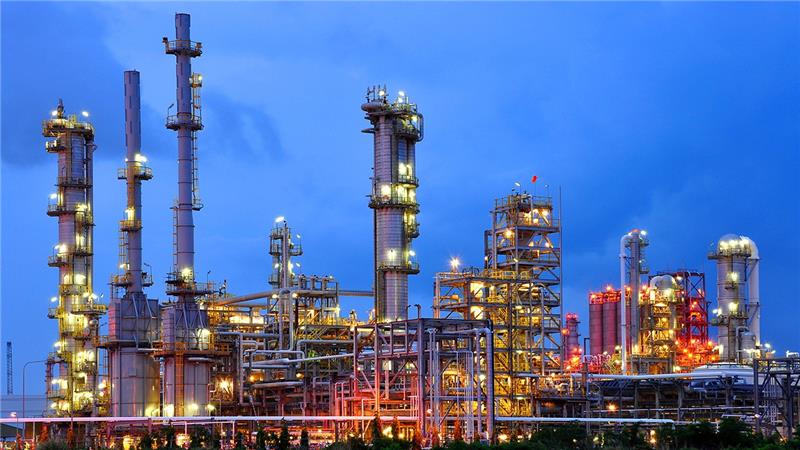Chemical Industry Overview

The chemical manufacturing industry plays a crucial role in industrial growth but also poses significant environmental challenges. Chemical MSMEs generate solid, liquid, hazardous and air emissions that must be properly managed to comply with Pollution Control Board (PCB) norms.
Overview
The chemical industry is a vital part of the global economy, producing a wide range of products that serve as the backbone for numerous other industries. From life-saving pharmaceuticals to fertilizers that boost agricultural productivity, chemicals play an essential role in our daily lives. However, this industry is also one of the most resource-intensive and polluting sectors, making environmental compliance a significant challenge, especially for Small and Medium Chemical Manufacturing Industries. This guide aims to help Small and Medium Chemical Manufacturing Industries understand and navigate the complex landscape of environmental regulations. By adopting cleaner technologies and ensuring compliance, these industries can reduce their environmental footprint, cut costs and enhance their reputation.
📌 Key Segments of the Chemical Industry:
1. Basic Chemicals:
- Definition: Includes high-volume, low-cost chemicals that serve as raw materials for other industries.
- Examples: Acids (sulfuric, hydrochloric), alkalis (sodium hydroxide) and industrial gases (oxygen, nitrogen).
- Applications:Used in the manufacture of plastics, textiles, detergents and metals.
- Challenges:High compliance costs for effluent treatment and emission control systems.
- Solutions:Adoption of cost-effective effluent treatment systems and recycling of process water.
2. Specialty Chemicals:
- Definition: High-value chemicals with specific functions, produced in smaller volumes.
- Examples: Dyes, pigments, adhesives, water treatment chemicals and surfactants.
- Applications:Widely used in electronics, automotive, construction and personal care products.
- Challenges:Managing hazardous waste and emissions from complex production processes.
- Solutions:Implementation of solvent recovery systems and air pollution control devices.
3. Agrochemicals:
- Definition: Chemicals designed to enhance agricultural productivity and protect crops.
- Examples: Fertilizers (urea, phosphates), pesticides, herbicides and fungicides.
- Applications:Boosts crop yield and protects against pests.
- Challenges:Managing runoff containing nitrogen and phosphorus and disposal of expired products.
- Solutions:Adoption of controlled-release formulations and integrated pest management (IPM).
4. Pharmaceuticals:
- Definition: Focuses on manufacturing Active Pharmaceutical Ingredients (APIs) and formulations.
- Applications:Medicines, vaccines, diagnostic agents and over-the-counter drugs.
- Challenges:High solvent use leading to air emissions and hazardous waste.
- Solutions:Adoption of green chemistry practices and solvent recovery systems.
🌍 Environmental Impact of the Chemical Industry:
1️⃣ Water Pollution:
- Sources:High solvent use leading to air emissions and hazardous waste.
- Key pollutants:Organic pollutants: Phenols, benzene and chlorinated compounds.
- Impact:Bioaccumulation of toxic substances in the food chain.
- Solutions for Small-Medium Chemical Manufacturers:Reuse of treated water for cooling or irrigation.
2️⃣ Air Pollution:
- Sources:Combustion processes, solvent evaporation, and chemical reactions.
- Key pollutants:Volatile Organic Compounds (VOCs): From solvents and processes.
- Impact:Respiratory diseases in nearby communities.
- Solutions for Small-Medium Chemical Manufacturers:Installation of scrubbers, precipitators.
3️⃣ Soil Contamination:
- Sources:Improper disposal of hazardous waste, spills and leakages.
- Key pollutants:Heavy metals, pesticides and persistent organic pollutants (POPs).
- Impact:Decreased soil fertility and contamination of crops.
- Solutions for Small-Medium Chemical Manufacturers:Secure landfills and incineration.
🏛️ Regulatory Framework:
India’s environmental regulations for the chemical industry are governed by a robust legal framework designed to control pollution and promote sustainable practices.
A. Key Environmental Laws and Regulations:
1. The Environment (Protection) Act, 1986:
- Serves as an umbrella legislation for environmental protection.
- Empowers the central government to issue notifications specifying standards for emissions and effluents.
2. The Water (Prevention and Control of Pollution) Act, 1974:
- Focuses on preventing and controlling water pollution through Effluent Treatment Plants (ETPs).
- Mandates Consent to Establish and Consent to Operate certificates from State Pollution Control Boards.
3. The Air (Prevention and Control of Pollution) Act, 1981:
- Regulates emissions of air pollutants, particularly from combustion processes.
- Requires installation of air pollution control equipment such as scrubbers and ESPs.
4. Hazardous and Other Wastes (Management and Transboundary Movement) Rules, 2016:
- Governs the generation, handling, storage and disposal of hazardous waste.
- Mandates preparation and submission of an Annual Hazardous Waste Report.
5. The Public Liability Insurance Act, 1991:
- Requires industries handling hazardous substances to obtain insurance policies to cover potential damages.
B. International Standards and Agreements:
- ISO 14001:Environmental Management Systems (EMS) certification.
- Basel Convention:Controls transboundary movements of hazardous and other wastes.
- Stockholm Convention:Regulates Persistent Organic Pollutants (POPs).
- Kyoto Protocol & Paris Agreement:Sets limits on greenhouse gas (GHG) emissions.
Adoption of Cleaner Technologies:
1️⃣ Process Optimization:
- Benefits:Reduces waste, lowers costs and enhances efficiency.
- Examples:Improving reactor efficiency and process controls.
2️⃣ Green Chemistry:
- Principles:Reducing the use of hazardous substances and minimizing waste.
- Examples:Catalytic reactions instead of stoichiometric ones, use of bio-based solvents.
3️⃣ Waste Minimization:
- Approach:Reuse, recycle and recover valuable resources.
- Examples:Reuse of treated effluent for non-potable purposes.
4️⃣ Energy Efficiency:
- Approach:Reducing energy consumption and improving process efficiency.
- Examples:Use of energy-efficient motors and lighting.
🏞 Benefits of Compliance for Small and Medium Chemical Manufacturing Industries:
- Cost Savings:Efficient use of resources reduces operational costs.
- Legal Compliance:Avoids penalties, shutdowns and litigation risks.
- Market Access:Compliance with standards like ISO 14001 enhances export opportunities.
- Reputation:Demonstrating environmental responsibility builds customer and stakeholder trust.
